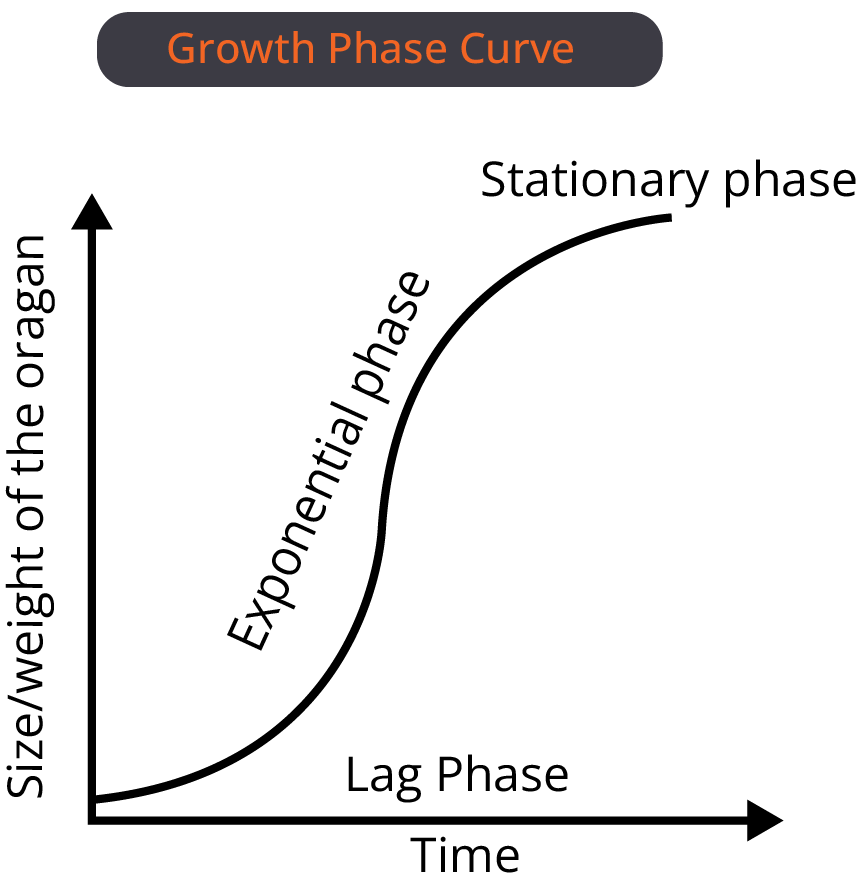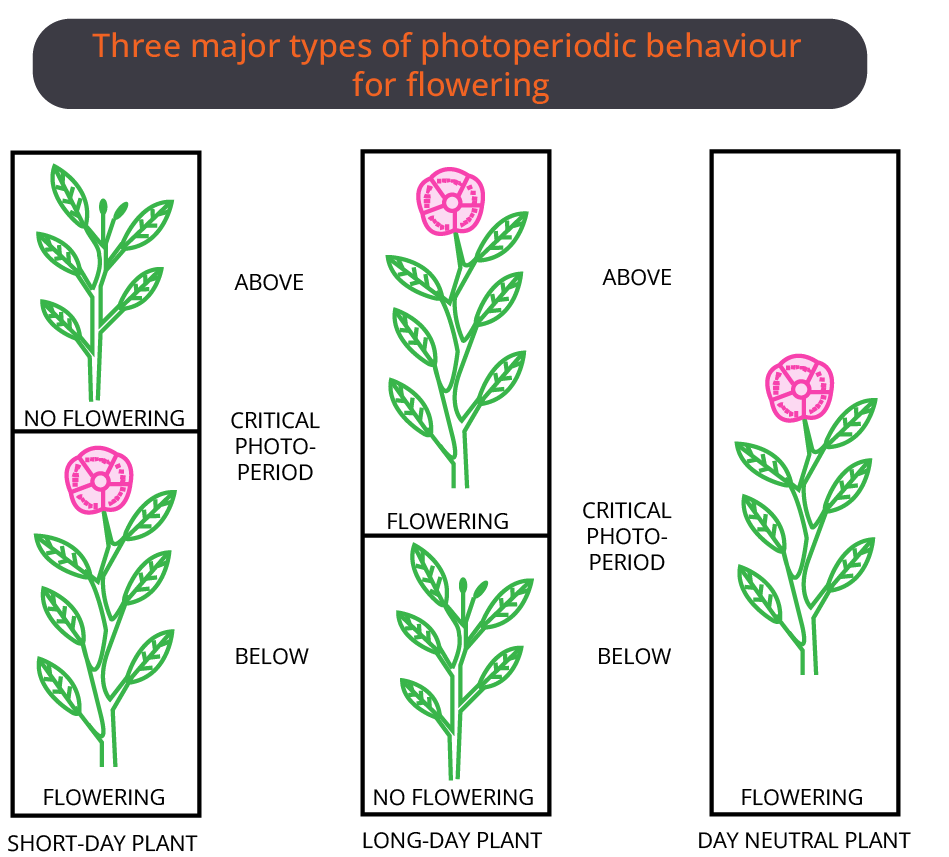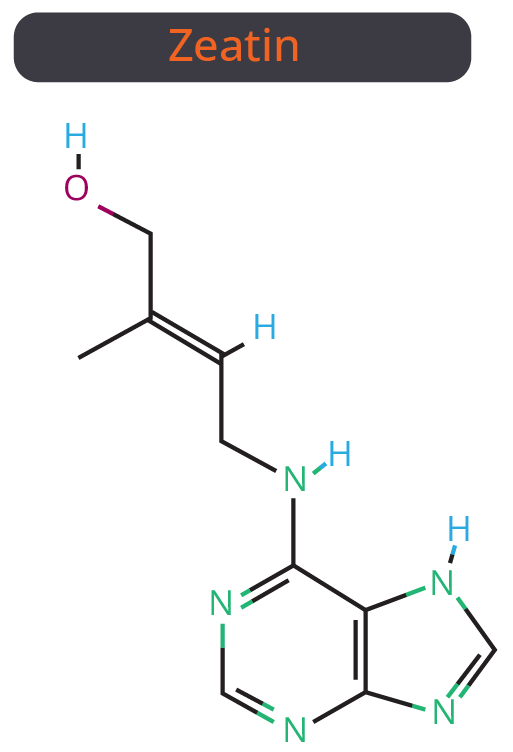




Plant Growth and Development: Stages, Factors, and Hormonal Regulation of Plant Growth
Plant Growth and Development refers to the continuous and irreversible changes in plants from seed germination to maturity. Growth occurs through cell division, elongation, and differentiation, influenced by internal factors like plant hormones (auxins, gibberellins, cytokinins) and external factors like light, temperature, and water.
The aim of this page is to explain how plants grow, what affects their development, and the importance of understanding these processes in agriculture, horticulture, and environmental science. By studying plant growth, we can improve crop productivity, ensure better plant care, and advance sustainable farming techniques.
Plant Growth and Development
Important Topics of Plant Growth and Development
Phases of Growth in Plants
Plasticity
Plant Growth Regulators
Photoperiodism, Vernalisation and Seed Dormancy in Plants
Important Concepts
Growth
It is defined as a permanent or irreversible increase in dry weight, size, mass, or volume of a cell, organ, or organism.
Phases of Growth
Plant growth takes place in three phases:
1. Formative Phase
It occurs at root apex, shoot apex, and other regions having meristematic tissue.
The rate of respiration in the cells of the formative phase is very high.
2. Phase of Enlargement
The cells formed during the formative phase that undergo enlargement.
Cell walls of the enlarging cell show plastic extension through enzymatic loosening of microfibrils.
A central vacuole forms in the growing cell.
Conductive tissues and fibres have the highest elongation.
3. Phase of differentiation or maturation
The enlarged cells develop into special types of cells by undergoing structural and physiological differentiation.
A cell's shape, size, thickness, and internal structure are all determined by structural differentiation.
A cell takes on a specific purpose during physiological differentiation such as absorption through root hairs, metabolite transfer by transfer cells, and so on.
Growth Curve
It is the graphic representation of the total growth against time. When total growth is plotted against time, the result is an S-shaped or sigmoid curve.
It consists of four parts:
Lag phase
Log phase (exponential phase)
The phase of diminishing growth
Stationary phase
Growth is slow in the lag phase, rapid during the log or exponential phase, slow again during the phase of diminishing growth, and growth stops completely during the stationary phase.

Types of Plant Growth
There are two main types of plant growth:
Primary Growth: This is the growth that occurs at the tips of the roots and shoots.
Secondary Growth: This is the growth that occurs in the radial direction, causing the plant to increase in diameter.
Meristematic Tissues: These are regions of active cell division and growth. Apical meristems are found at the tips of stems and roots, contributing to the plant's length.
Factors Affecting Plant Growth
There are many factors that can affect plant growth, including:
Genetic Makeup: The genes in a plant determine its potential for growth.
Environmental Conditions: Environmental conditions such as light, water, temperature, and nutrients can all affect plant growth.
Hormones: Hormones are chemicals that regulate plant growth and development.
Difference Between Arithmetic Growth and Geometric Growth
Relative Growth Rate: It is growth per unit initial growth.

Conditions for Growth
1. Nutrients: They are raw materials for the synthesis of protoplasm as well as a source of energy. Nutrients should be rich in nitrogenous components for increased synthesis of protoplasm and carbohydrates for energy and cell wall synthesis.
2. Water: It is required for cell elongation, maintenance of turgidity of growing cells, and providing the medium for enzyme action. Even a slight deficiency of water reduces growth. It may, however, promote differentiation. Water stress completely stops growth.
3. Oxygen: It is essential for aerobic respiration and hence the availability of energy for biosynthetic activity.
4. Light: It is required for tissue differentiation, synthesis of photosynthetic pigments, and photosynthesis. Its absence results in etiolation. Light also influences certain stages of growth. The phenomenon is called photoperiodism.
5. Temperature: A temperature of 28-30°C is optimum for proper growth in most plants. Higher temperature above 45°C hinders growth due to excessive transpiration, denaturation of enzymes, and coagulation of protoplasm. Lower temperature inactivates enzymes as well as increases the density of protoplasm.
6. Gravity: The vector of gravity determines the direction of the shoot and root growth. The direction of light also determines the orientation of leafy shoots.
7. Other Factors: Excess salt, mineral deficiency, and other stress factors have a detrimental effect on growth.
Development
The sequence of events that occur in the life history of a cell, organ, or organism which includes seed germination, growth, differentiation, maturation, flowering, etc. is called development.

The sequence of events occurring during the development of cells of higher plants
Differentiation
It is a permanent localised qualitative change in the size, biochemistry, structure, and function of cells, tissues, or organs. For example, fibre, vessel, tracheid, sieve tube, mesophyll, leaf, etc.
Dedifferentiation
Regaining the ability to divide after differentiation is called dedifferentiation. For example, dedifferentiation of parenchyma cells to create interfascicular cambium, cork, etc.
Redifferentiation
Dedifferentiated cells lose their ability to proliferate and mature into specialised functions, such as secondary xylem, phloem, and so on.
Plasticity
Plasticity refers to an organism's or cell's ability to modify its phenotype in response to changes in its surroundings.
Plant Growth Regulators (PGR)
It is a chemical substance other than nutrient produced naturally in plants, which may be translocated to another region, for regulating one or more physiological reactions when present in low concentration. They are broadly divided into two groups:
1. Plant Growth Promoters
They perform activities like cell division, cell enlargement, pattern formation, tropic growth, flowering, fruiting, seed formation, etc.
They are three in number, i.e., auxin, cytokinin, and gibberellins.
2. Plant Growth Inhibitors
It normally induces dormancy and abscission.
It is two in number, i.e., Abscisic acid and Ethylene (it is largely a plant growth inhibitor but is also involved in some growth promotion activities).
Photoperiodism
The effect of the daily duration of light hours and dark periods on the growth and development of plants mainly flowering plants is called photoperiodism.
On the basis of photoperiodic response to flowering, plants have been divided into the following categories:
(a) Short Day Plants
They flower when the photoperiod or day length is below a critical period.
This group includes the majority of winter flowering plants. For example, Xanthium (Cocklebur), Chrysanthemum, Dahlia, Rice, Sug-arcane, Strawberry, Potato, Tobacco, etc.
(b) Long Day Plants
These plants flower when they receive long photoperiods or light hours which are above a critical length. For example, Wheat, Oat, Sugar Beet, Spinach, Radish, Barley, etc.
(b) Day Neutral Plants
The plants can blossom throughout the year. For example, Tomato, Pepper, Cucumber, Cotton, etc.

Three major types of photoperiodic behaviour for flowering
Vernalisation
It is a process of shortening of the juvenile or vegetative phase and hastening flowering by previous cold treatment.
Site for Vernalization
The stimulus of vernalization is perceived only by the meristematic cells, e.g., shoot tip, embryo tips, root apex, developing leaves, etc.
Requirements of Vernalization
(i) Low Temperature - Low temperature required for vernalization is usually 0°-5°. It is 3°-17° in the case of the biennial Henbane.
(ii) Period of Low Temperature - Treatment. It varies from a few hours to a few days.
(iii) Actively Dividing Cells - Vernalization does not occur in dry seeds.
Seed Dormancy
It is the innate inhibition of germination of a viable seed even placed in the most favourable environment for germination.
Importance of Seed Dormancy
1. Perennation - Seed dormancy allows seeds to pass through drought, cold, and other unfavourable conditions.
2. Dispersal - It is essential for the dispersal of seeds.
3. Germination - Under favourable conditions, seeds germinate only when sufficient water is available to leach out inhibitors and soften the seed coats.
4. Storage - It is because of dormancy that human beings are able to store grains, pulses, and other edibles for making them available throughout the year and transport them to the areas of deficiency.
Solved Problems From Chapter
1. What is vernalisation?
Ans: It is a process of shortening of the juvenile or vegetative phase and hastening flowering by a previous cold treatment.
2. What are the three stages of cellular growth?
Ans: The three stages of cellular growth are:
1. Cell division
2. Cell enlargement
3. Cell maturation
Solved Problems of Previous Year Question from the Chapter
1. Name the plant growth regulator that upon spraying on the sugarcane crop increases the length of the stem, thus increasing the yield of the sugarcane crop.
a. Gibberellin
b. Ethylene
c. Abscisic acid
d. Cytokinin
Ans: a. Gibberellin.
When sprayed on sugarcane, gibberellin lengthens the stems, resulting in a 20-tonne-per-acre increase in sugarcane yield.
Trick to Remember:
Auxin, gibberellin, cytokinin- growth phytohormone
Ethylene, Abscisic acid- growth inhibition phytohormone
2. What is the photoperiod perception site required for the induction of flowering in plants?
a. Leaves
b. Lateral buds
c. Pulvinus
d. Shoot apex
Ans: d. Shoot apex.
The responses of plants to the lengths of dark and light duration are referred to as photoperiodism.
Leaves are where the photoperiod is perceived. On induction of appropriate photoperiods, such as the hormone florigen, which is responsible for blooming, stimulates flowering by migrating from leaves to shoot apices.
Trick to Remember: Photoperiodism- Cycle of light (day) and darkness (night)
Practice Questions
1. Coconut milk contains a cytokinin called ____ which promotes plant growth.
a. Naphthalene acetic acid
b. Indole-3-acetic acid
c. Gelatin
d. Zeatin
Ans: d. Zeatin.
Cytokinins are a type of plant growth hormone that induces cell division.
Zeatin is a cytokinin-family plant growth hormone. It's a purine ring structure containing hydroxyl, amino, and olefin groups on the side chain.

2. Seed dormancy is triggered by
a. Indole-3-ethanol
b. Abscisic acid
c. Carbon dioxide
d. None of the above
Ans: b. Abscisic acid.
It is a plant hormone that has a role in many aspects of plant growth and development, including seed dormancy and germination.
Key to Remember: Abscisic acid- growth inhibition hormone
Conclusion
This article has been written with NEET aspirants in mind. It covers all of the important ideas and gives concise explanations, making it excellent for effective revision. Plant growth and development is a complex process that is essential for the survival and reproduction of plants. Understanding the factors that affect plant growth can help us to improve agricultural productivity and to conserve natural resources. This article includes NEET practice tests and Biology NCERT, as well as essential ideas, concepts, and problems from the previous year's NEET exam questions. Make sure to put your knowledge to the test by doing the Practice question on your own.
Essential Study Materials for NEET UG Success
Understanding Plant Growth and Development

 Share
ShareFAQs on Understanding Plant Growth and Development
1. Do the AIIMS questions come up again in the NEET?
As the question format is more or less the same, you should solve all previous year's papers. If you have time, consider solving the past five years’ JEE MAIN Chemistry and Physics questions, as they are frequently repeated in NEET.
2. What is the number of questions that are asked from Plant Growth and Development in NEET?
The number of questions that come from this chapter is 1.
3. Is it true that the NEET questions are from the previous year?
It is not sure that the fixed number of questions will come from the previous year. Every year, a fresh pattern of questions is created, so only 2 to 3 questions are repeated from the previous year, though this is not guaranteed.
4. What is plant growth and development?
Plant growth is the increase in size due to cell division and elongation, while development includes all changes from germination to maturity and reproduction.
5. What are the stages of plant growth?
The major stages include germination, seedling growth, vegetative phase, flowering, fruiting, and senescence (aging and death).
6. What factors influence plant growth?
Growth is affected by internal factors (hormones like auxins, gibberellins) and external factors (light, water, temperature, and nutrients).
7. What is the role of plant hormones in growth?
Plant hormones like auxins, gibberellins, cytokinins, abscisic acid, and ethylene regulate various growth processes, including elongation, flowering, and dormancy.
8. How does photosynthesis affect plant growth?
Photosynthesis provides the energy and organic compounds necessary for growth by converting sunlight into food.




















 Watch Video
Watch Video


